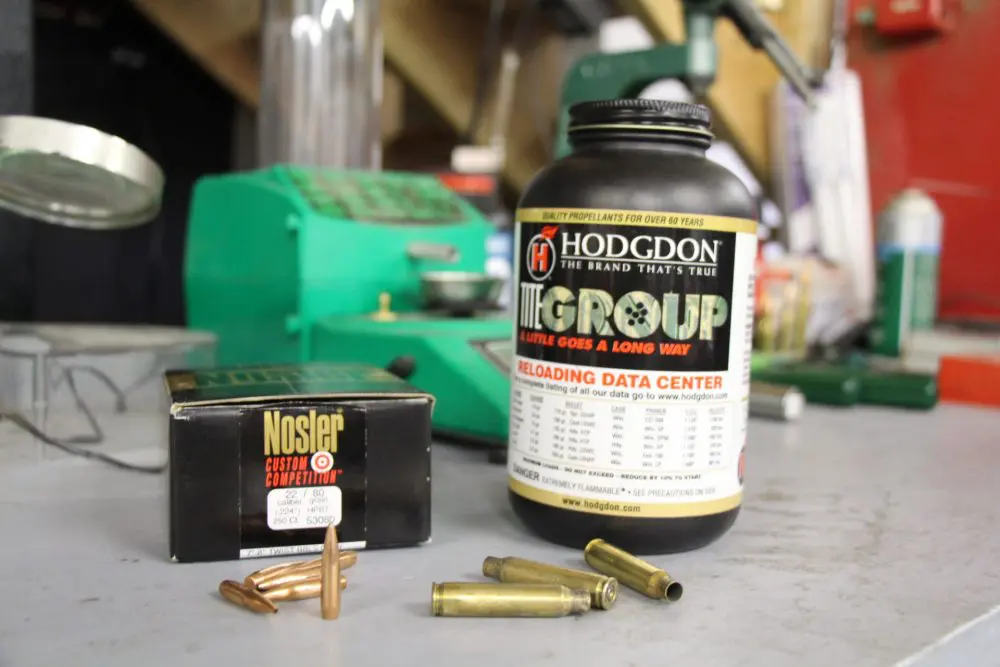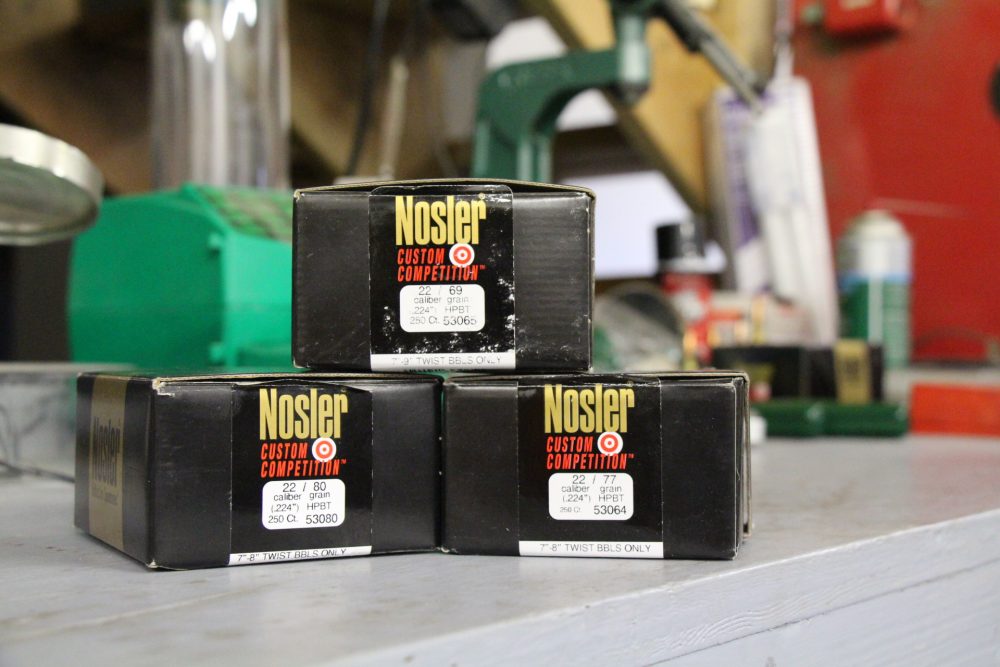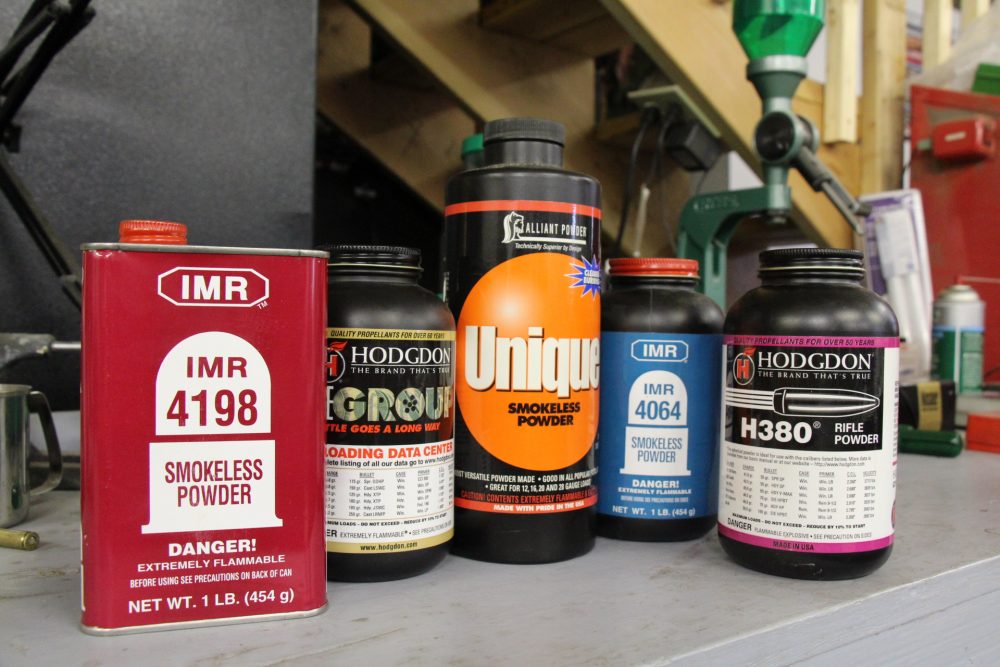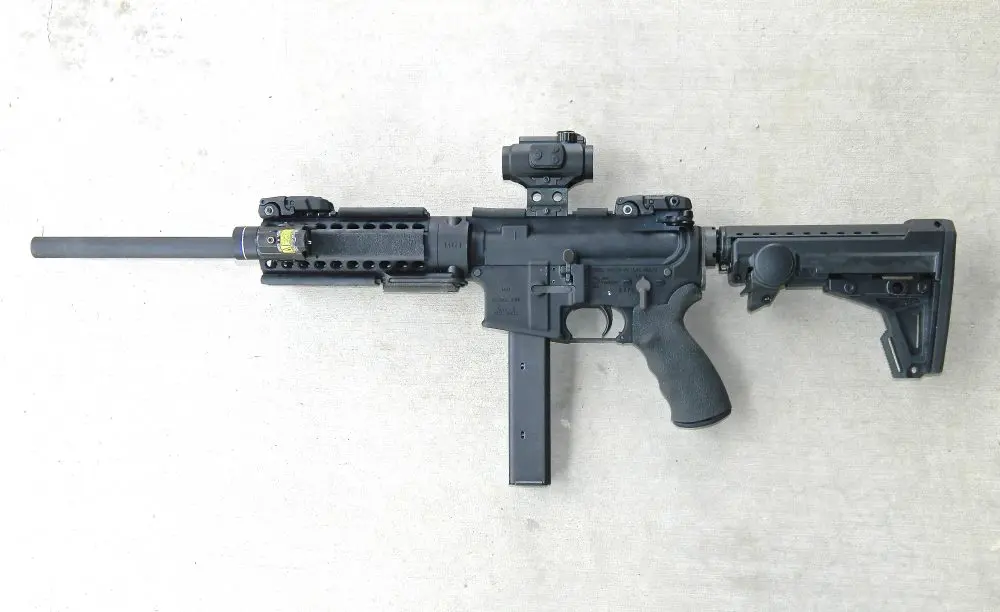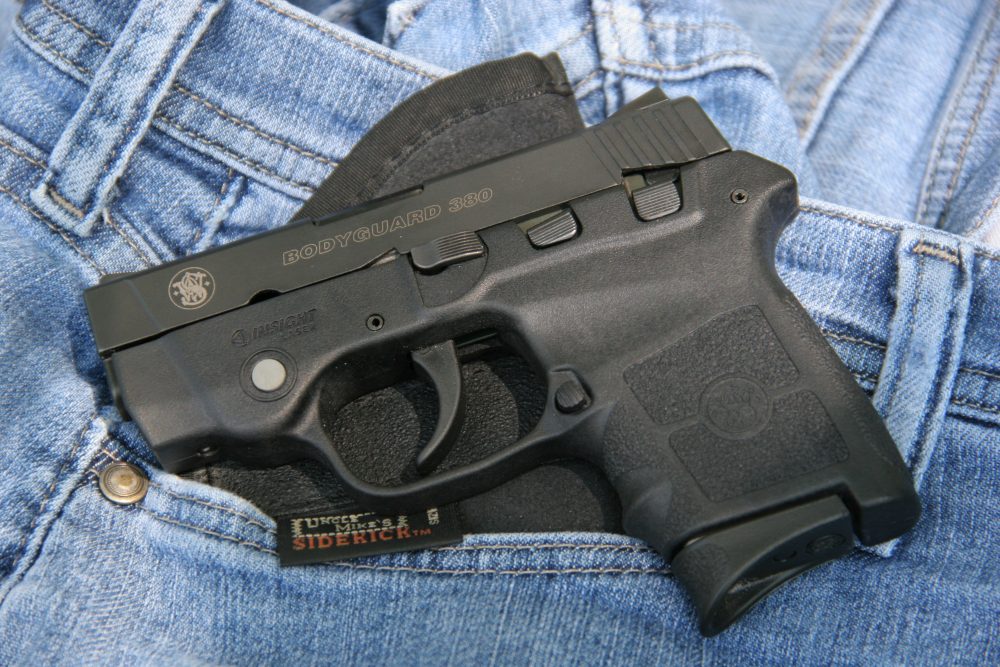Suppressors have become extremely popular, and more folks are reaping the benefits of suppressed shooting. They are so popular a push has begun to take them off the NFA list of regulated weapons.
In my opinion, they never should have been put on that list to begin with. I know—they were put there to keep bloodthirsty assassins from committing horrible murders undetected, and it has done much to keep these crimes in Hollywood movies and not on our streets. (I hope you took that as sarcasm.)
Truth be told, suppressors do just that, suppress the fast-moving gasses that cause the bang when the gun is fired. They don’t silence the bang to an undetectable level, so silencer is an incorrect term. Silencers don’t exist in the real world, only in the movies. Subsonic ammo quiets the weapon even more, but at the cost of other benefits.
One reason the sound is not completely suppressed—especially in rifles—is the sonic “crack” that is heard as the bullet breaks the sound barrier. The magic speed is just under 1,100 feet-per-second (fps). If the bullet exceeds this speed, there will be a crack.
Subsonic rounds performed well in the bolt gun, but high-velocity rounds were adequate in the sound department without all the challenges of subsonic.
Table of Contents
CALIBERS, VELOCITIES AND SOUND
Suppressed pistols are much quieter than rifles because most of them are already traveling subsonic and the .22 pistol is really quiet. The .22 is the most popular because it can be used to eliminate pests (non-human) in a suburban environment without causing a stir.
High-velocity .22 Long Rifle runs out at about 1,200+ fps. Remington High Velocity runs around 1,280. Standard-velocity .22 is mostly already subsonic. Wolf Match Grade .22 ammo leaves the barrel at 1,050 fps. It is very accurate and works the Ruger 10-22 semi-auto action. As the velocity is Standard, it functions—at least theoretically—in all .22 rifles and pistols for long rifle loads.
I tried some Remington Subsonic ammo, which is really quiet, but it sometimes does not run the semi-auto. As velocity and pressure decrease, so does the ability to run the action.
I use these in semi-auto guns on my trapline because they don’t pass through the animal creating an exit wound, but I have to manually run the action.
We cannot reload .22 Long Rifle like we can our larger calibers, but we can reload for subsonic results. Here I specifically discuss the .223, as there are other excellent calibers that were designed to be used with subsonic ammo.
Velocity target was 1,050 fps. Chronograph indicated when a load had unacceptable reading velocities, which varied over 100 fps from shot-to-shot of a specific load.
MISSION: SUBSONIC .223
The .223 was designed with the intention to move a small bullet fast. My efforts were to get a .223 subsonic load. I have loaded subsonic rounds and they are really quiet in an AR-platform rifle, but they have some downsides, the major one being they will not work the action at subsonic speeds. I tried several loads and some failed miserably in that they wouldn’t work the action even after they were well above the sound barrier velocity.
Before I get into specific loads, I must mention there are some real horror stories from others working with subsonic loads through their suppressors—both factory and handloads. A few guys had projectiles get stuck in their suppressors or hit the sides going through, causing damage. I did not experience anything bad, but if you start down this path, understand there could be problems. I take no responsibility for misuse of this information. You might even come to the conclusion that subsonic ammo is not worth the effort.
Nosler 80-grain bullet and Titegroup performed best with subsonic velocities but would not work the AR action.
PISTOL POWDERS
Titegroup
I started with Titegroup powder. All these loads were shooting a Nosler 80-grain .22 bullet through a 1:7 twist AR-platform rifle with 16-inch barrel. My thought was the heavy bullet and shorter barrel would aid in reducing velocity mechanically.
I started with 5.4 grains of Titegroup because my Dillon was throwing that for loading my .45 ACP. Hodgdon publishes a subsonic load for Titegroup starting just under this charge, and I found it would go sonic with just a few more grains.
It was definitely quiet and I judged accuracy at this point of experimentation by trying to hit an eight-inch plate at 25 yards. Some loads I tried would not hit the steel. If I found one I liked, I put it on paper to see how it performed. It passed the first tests of hitting the plate and being quiet, but would not cycle the AR action. I ran some tests on paper and it was reasonable, shooting about a one-inch group at 25 yards. Titegroup turned out to be one of the best powders for subsonic loads, though.
It was bothersome to load a rifle case with small amounts of pistol powder, because as we all know, rifle cartridges are more accurate with a charge that most nearly fills the case. The Titegroup was designed to load small amounts in large pistol cases like .45 Colt.
Some Nosler bullets author worked with. The 80-grain performed the best at low velocities.
Trail Boss
That brought me to the next try: Trail Boss. This powder is extremely fluffy in its donut shape and should fill the case more with a small charge. It did, but I wasn’t impressed with its accuracy and it also went sonic long before the action cycled.
I was beginning to think there wasn’t going to be an answer to the cycling problem, but I had a cabinet full of powders to try—both rifle and pistol. I also was testing the loads in a bolt gun with a threaded barrel suppressed with the same unit that was on my AR.
With that setup, the only things I was looking for were accuracy and subsonic velocity. The bolt gun has a 1:8 twist barrel, so I believed the 80-grain Nosler should perform well. I built the gun with the fast twist so it could handle the heavier .22 bullets. I loaded a couple and shot them until I found the subsonic load on the chronograph, then loaded a couple more to see how accurate they were. Once they passed all these tests, I’d see if they would cycle the action. It was tedious, as I shot them through the AR to know immediately whether they would cycle the action.
Others
Other pistol powders I tried were 2400, Unique, Blue Dot, and Red Dot. They all sent subsonic loads, but also broke the sonic speed before working the action. Some of them sent the bolt carrier back but did not strip a fresh round. Some pushed the bolt back a little and closed again with the empty case. Sometimes the action was not worked enough to even cock the hammer.
Of the pistol powders, the Titegroup gave me the best results of a subsonic load, though my super-duper semi-auto was reduced to a single shot. The rounds were really quiet, and the 80-grain Nosler bullet gave targets a good wallop out to 100 yards.
Some of the many powders author used to work up loads. Metal can of IMR 4198 has been on the shelf a while.
RIFLE POWDERS
The first rifle powder I tried was IMR 4064, because I was in the process of loading some .308 cartridges and it was easy to weigh. I started with 11 grains and it locked the bolt back but also was supersonic. I loaded rounds slowly reducing the charge, and 10 grains was subsonic but wouldn’t work the action. I did this with a variety of IMR and Hodgdon powders with the same results, not enough pop to work the bolt. Of all the powders I tried, the IMR 4064 was the closest to getting good results.
These were all slower-burning extruded powders, so I tried Winchester 748, which was very inconsistent in regard to velocities. Sometimes the velocity changed from round to round, going subsonic to supersonic on the chronograph. I started with 12 grains and reduced it to 11.1 and it was still supersonic and would not operate the bolt.
MECHANICAL SOLUTIONS
I was starting to think I wouldn’t get the results I was looking for. Some loads could be developed to an acceptable subsonic load but didn’t develop enough pressure to work the bolt carrier. Two mechanical fixes I tried were putting a low-mass bolt carrier in the gun to see if the reduced weight would help, and a reduced spring, since some loads moved the bolt partway. I went to my trusty Brownell’s catalog for some answers.
Several manufacturers produce low-mass carriers. I went with the JP Enterprises brand because it was the lightest of all selections in the Brownell’s catalog. I loaded the charges that came close to cycling the bolt at subsonic speeds to see if the lighter mass functioned. It didn’t solve the cycling problem with subsonic loads, but it functioned fantastically with standard loads. If you are going to a low-mass bolt carrier for one of the benefits they offer, I recommend the JP Enterprises.
Extreme Shock advertises subsonic .223 loads that function and cycle an AR action. An online retailer told me the factory stuff he had in stock would not cycle an AR action. He had some Extreme Shock ammo that he’d sold out of, but several of his customers were having problems cycling their actions with it. It seems there is no solution to quieting down the .223 AR with subsonic ammo and still have a semi-auto.
Author loaded a few rounds of a specific weight powder, then went outside and tested it on the chronograph. Tedious, but having a range out back made it easier.
HUNTING APPLICATIONS
I have been calling and shooting coyotes in tight areas around ranches and livestock and wanted to get quieter shooting so as not to disturb people living on the ranches. When I shoot, it is in a safe direction in relation to people and livestock, but to a person hearing the shot from inside the house—not knowing who shot it and from where—it can be disturbing. The suppressor solves this problem, as the residents don’t hear it and it doesn’t rile up livestock. Many times when two coyotes come in, the second doesn’t notice the shot unless he sees movement.
Suppressed shots are plenty quiet for this, even with high-velocity rounds. When I was hunting coyotes this season, just as I set up and started calling, some elk hunters came down the road on their four wheelers to load them on their truck.
Thinking it futile to continue calling with all this commotion, I did it anyway. To my surprise, a coyote appeared at 20 yards. He spooked off and I grounded him at about 120 yards. By the time I retrieved the coyote and walked back to the truck, the hunting party was driving by on the road. The conversation indicated they were looking right at me when I shot but didn’t hear a thing. That’s adequate performance out of a suppressor without going subsonic.
I hunt with a bolt gun, so subsonic rounds that won’t cycle a bolt in an AR are of no consequence, but for hunting I don’t see any real reason to use them, as they reduce your range and performance. In the AR in a defensive situation, the slower small bullet won’t be as good a fight stopper because the .223 gets its power from velocity.
CONCLUSIONS
Other than the fact that having a Hollywood silencer that would cycle the action on an AR would be cool, I can’t see any functional advantage worth the drawbacks and chance of damaging the suppressor. Even though I didn’t find a subsonic load that will cycle the AR action in .223, I did come up with some good subsonic loads for my bolt gun. I just couldn’t find a use for them with the disadvantages that come with subsonic.
If an individual needs to shoot subsonic AR loads, one would do better to start with a .30-caliber cartridge like the .300 Whisper/Blackout cartridges that were purposely designed for suppressed use.
Dave Morelli retired from the Las Vegas Metropolitan Police Department, where his duties included being a Patrol and Field Training Officer as well as a member of the LVMPD SWAT team both as an operator and sniper.
[Caveat: Since S.W.A.T. has no control over reloading practices or equipment used, this article should be used for information purposes only. S.W.A.T. assumes no liability for accidents or injuries that may occur by using loads in this article.]
